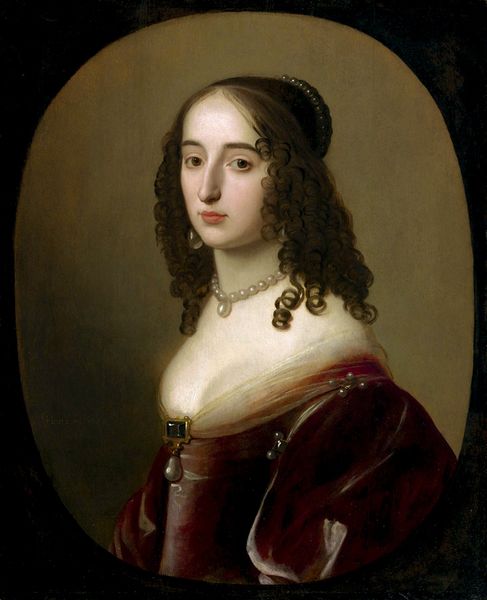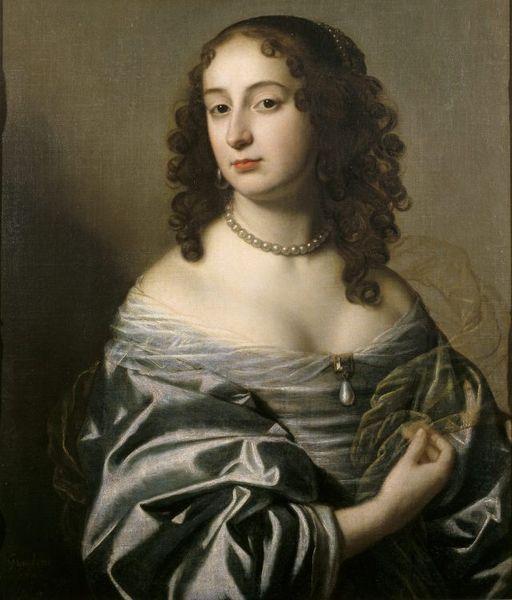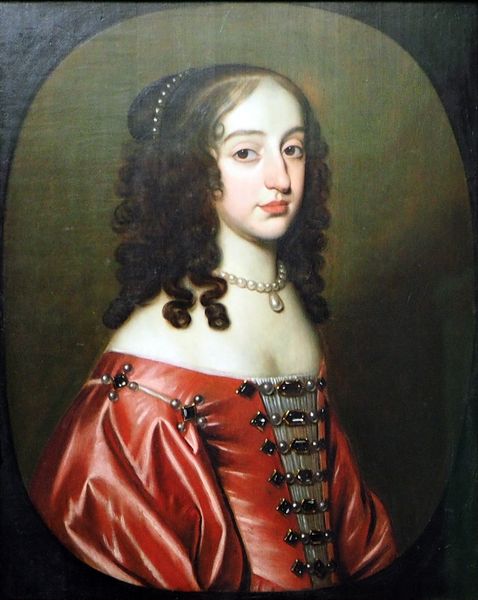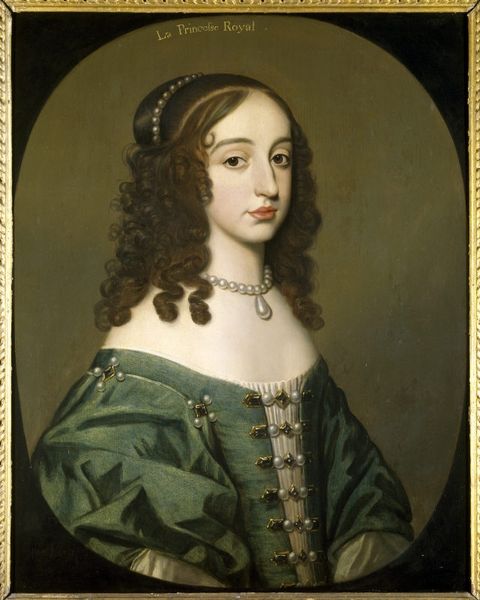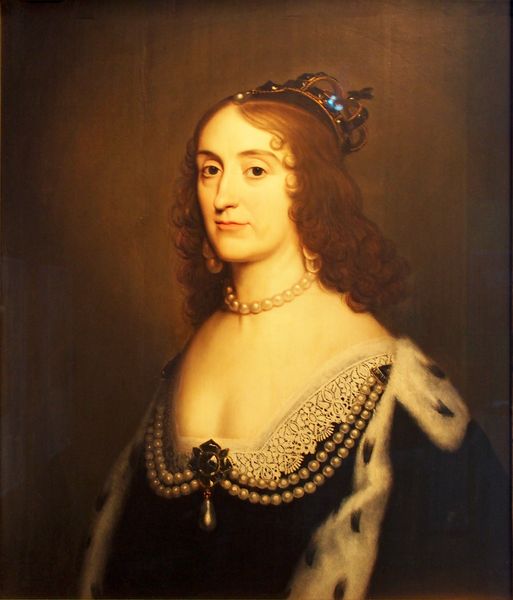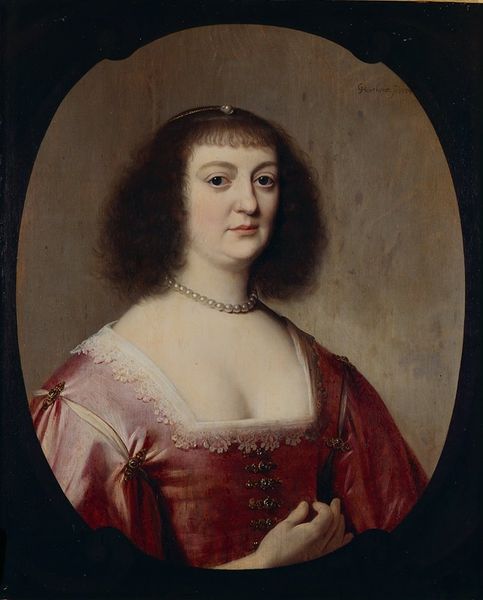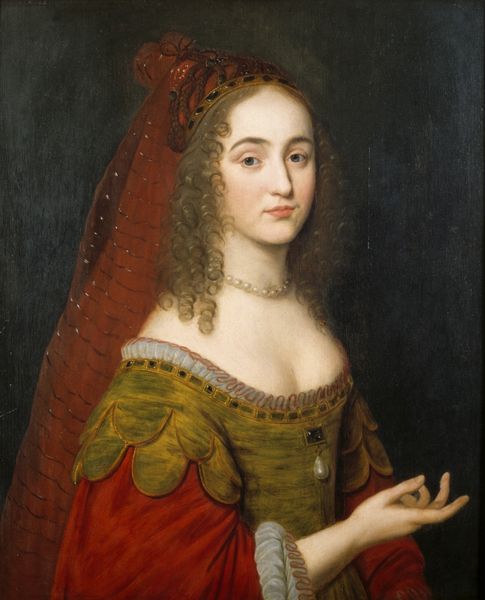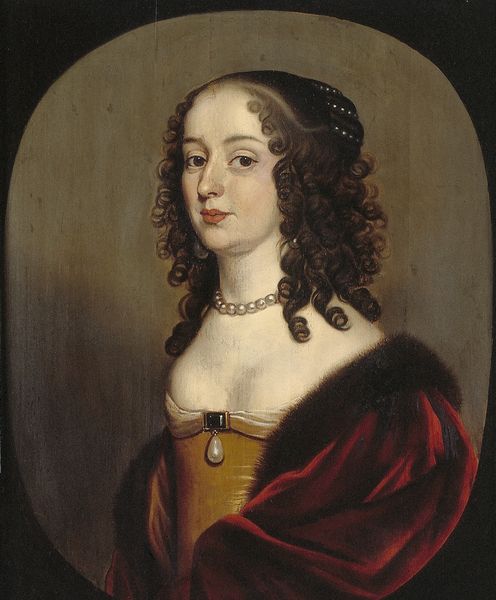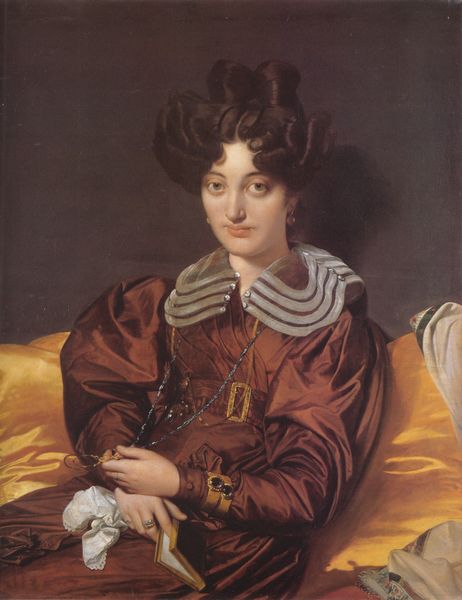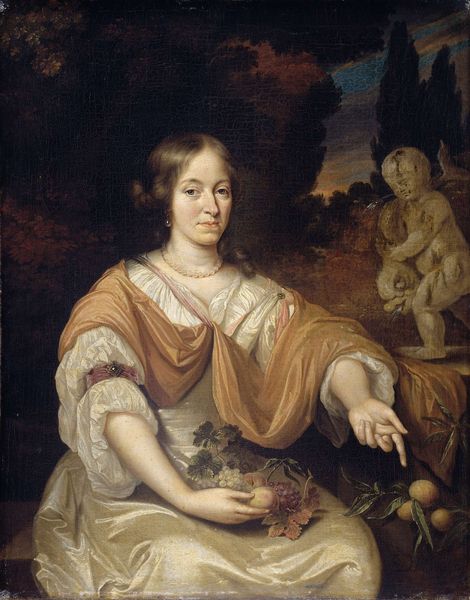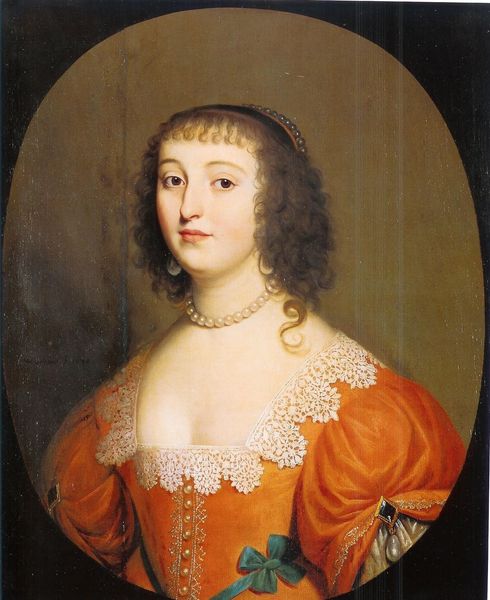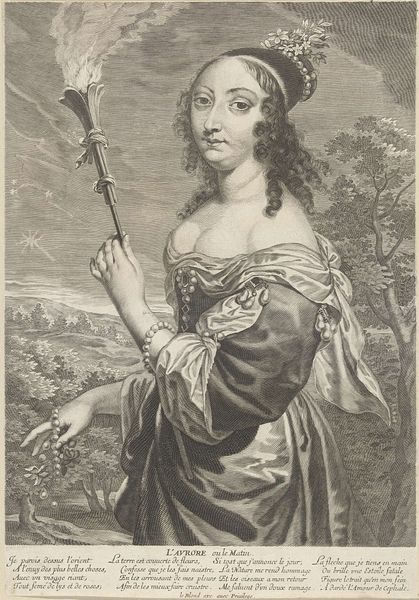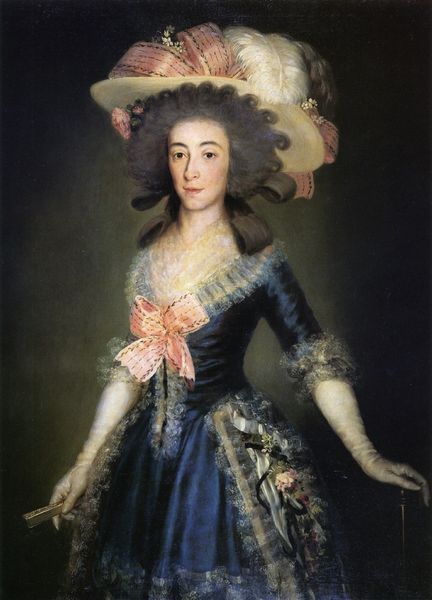
Princess Louise Hollandine, Princess Palatine, Abbess of Maubuisson, Pontoise 1650
0:00
0:00
painting, oil-paint
#
portrait
#
baroque
#
painting
#
oil-paint
#
history-painting
Copyright: Public domain
Editor: So, we're looking at Gerard van Honthorst's "Princess Louise Hollandine," painted in 1650, with oil paints. The red dress is beautiful, and quite rich in color! I wonder what this portrait tells us about the Princess. What's your take on this work? Curator: My focus immediately shifts to the materials used and the social context surrounding their production. Look at the red pigment, likely derived from expensive sources – perhaps imported cochineal. This tells us volumes about the economic power supporting Honthorst's practice, and the status of his sitter. How was this paint sourced, prepared, and applied by Honthorst and his workshop? These are questions of labor and material culture. Editor: That's interesting! I was focusing on the portraiture aspect, but thinking about where the paint came from gives it another layer. The pearls she is wearing – are they signifiers as well? Curator: Absolutely. The pearls represent status, wealth, and participation in global trade networks. Each element - the canvas, the pigments, the sitter’s adornments - is tied to production and consumption practices that shape the painting’s meaning. But look closer at how Honthorst manipulates the oil paint to create that illusion of shimmering silk, capturing its weight, its texture. What does that technique signify for you? Editor: It signifies her social position! It’s like the painting is shouting "Look at this wealthy lady!" I suppose, what you are saying, is that the artwork is both aesthetic and reveals the context it was created in. Curator: Precisely. Examining the materials reveals networks of power, production, and consumption in 17th-century society. That’s a deeper appreciation beyond surface aesthetics. Editor: I never considered analyzing a painting like that before. It adds so much more depth to the image. Thank you for your insights!
Comments
No comments
Be the first to comment and join the conversation on the ultimate creative platform.
